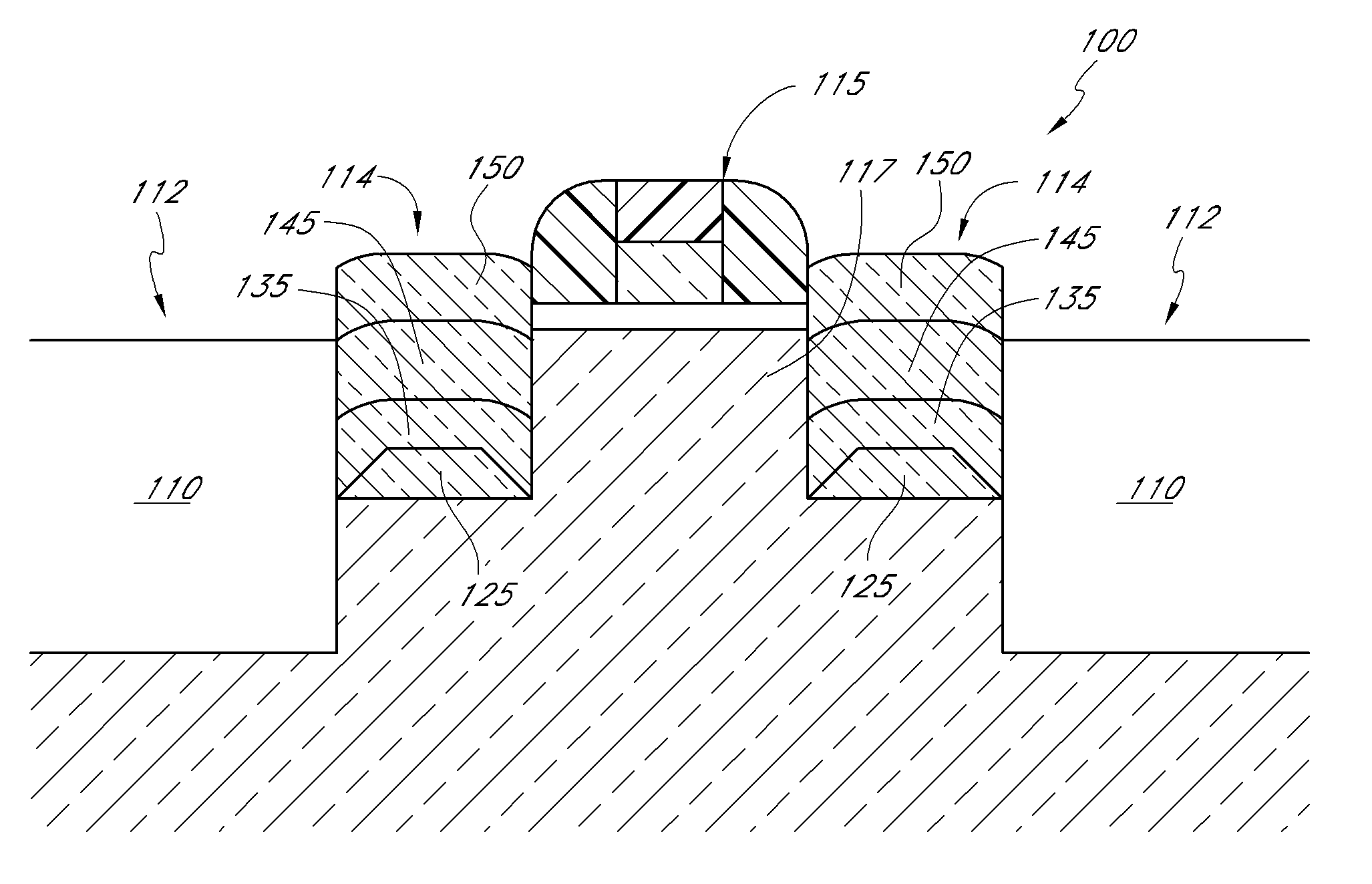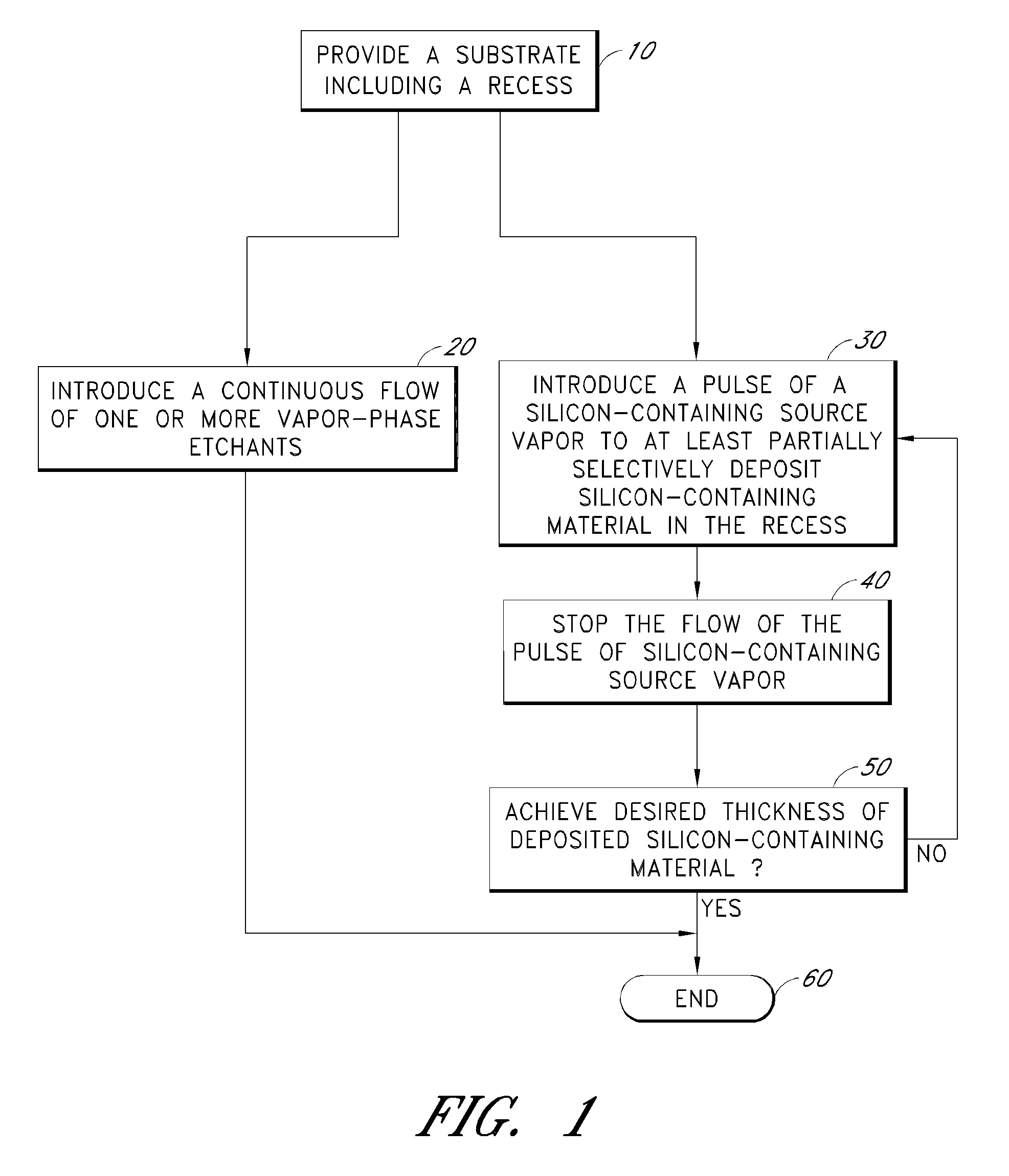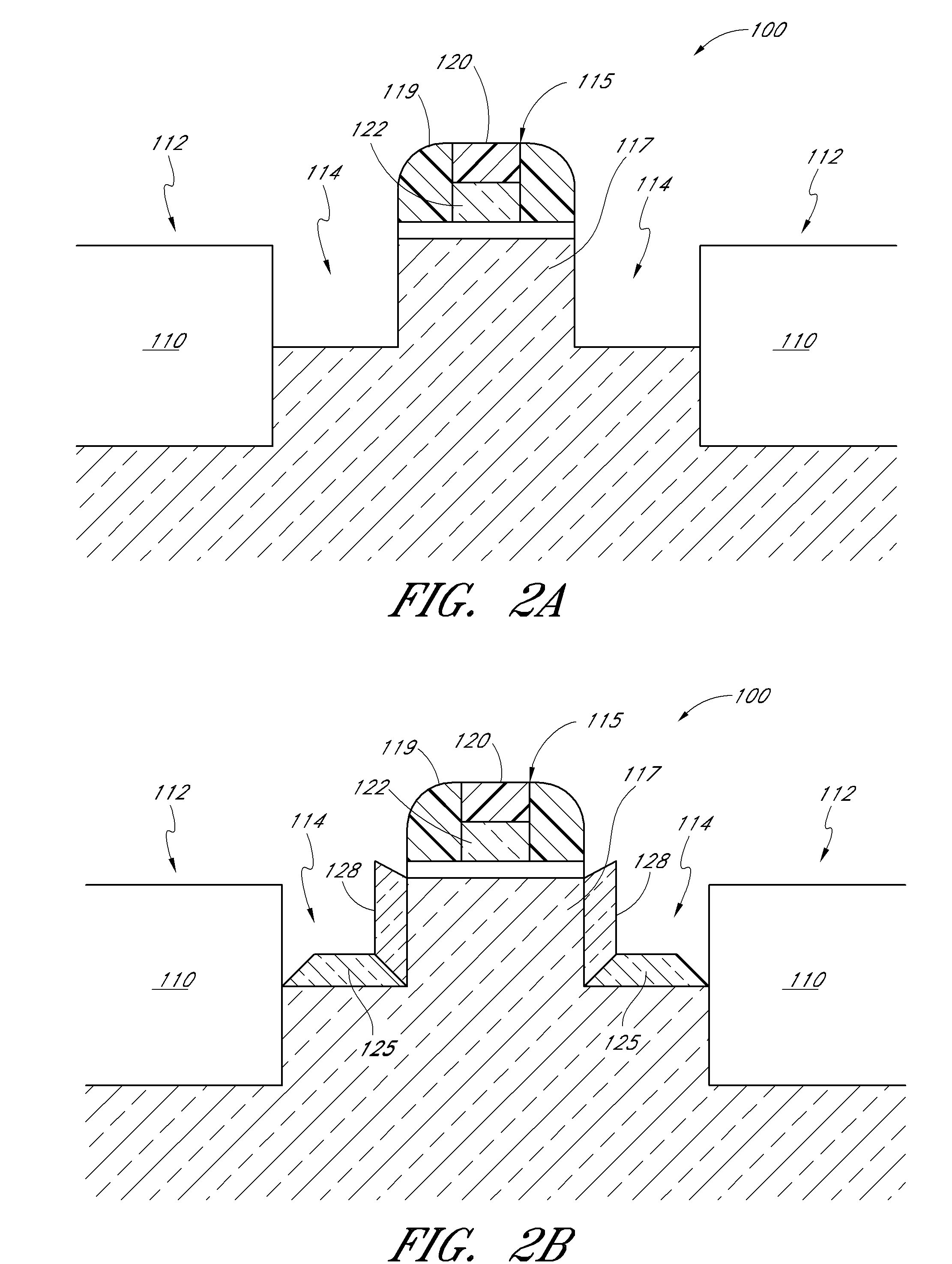Cyclical epitaxial deposition and etch
- Summary
- Abstract
- Description
- Claims
- Application Information
AI Technical Summary
Benefits of technology
Problems solved by technology
Method used
Image
Examples
example process
PARAMETERS
Example 1
[0071]Example process parameters are summarized in Table A below, which lists operating ranges for a selective deposition process according to one embodiment using either Cl2 or HCl as an etchant gas. Optional ranges are provided in parentheses. As is evident from Table A, the process conditions such as chamber temperature, chamber pressure and carrier gas flow rates, are preferably substantially similar throughout the selective deposition process, thereby allowing throughput to be increased. Thus, the example below employs isothermal and isobaric conditions during the selective formation process.
TABLE AProcess PhasePre-SelectiveTransition Period toPost-EtchDepositionEpitaxialSelective EpitaxialPurge(one time atGrowthEtchGrowth (SEG);(one time atbeginning)(SEG)Backrepeat x-timesend)duration (sec)52.4-12 2.4-30 .1 s10temp (° C.)525-600 525-600 525-600 525-600 525-600 pressure (Torr)10-20010-20010-20010-20010-200H2 / He flow (slm)2-202-202-202-202-20Cl2 / HCl flow (sccm...
example 2
[0077]Example process parameters are summarized in Table B below, which lists operating ranges for a selective deposition process according to one embodiment using HCl as an etchant gas. Optional ranges are provided in parentheses. As is evident from Table B, the process conditions such as chamber temperature and chamber pressure, are preferably substantially similar throughout the selective deposition process, thereby allowing throughput to be increased. Thus, the example below employs isothermal and isobaric conditions during the selective formation process.
TABLE BTransitionPre-Period toDepositionDeposition(once at(repeat 30beginning)DepositionPurge 1Purge 2EtchPurge 3Purge 4times)Time303.63.62.463.62.40.1[s]PurposeSiCP(Ge)Purge outRamp downEtch Ge withRamp updepSi3H8, MMS,Hehigh HCL / lowHePH3HeTokenDepDepDepDepDepDepDepDepTemp525525525525525525525525[° C.]Pressure200200200200200200200200[Torr]He [slm]1010102221010Si3H8100V100———100V100V100V[mg / min]MMS60V6060V60V60V60V6060[sccm]PH3...
PUM
 Login to View More
Login to View More Abstract
Description
Claims
Application Information
 Login to View More
Login to View More - R&D
- Intellectual Property
- Life Sciences
- Materials
- Tech Scout
- Unparalleled Data Quality
- Higher Quality Content
- 60% Fewer Hallucinations
Browse by: Latest US Patents, China's latest patents, Technical Efficacy Thesaurus, Application Domain, Technology Topic, Popular Technical Reports.
© 2025 PatSnap. All rights reserved.Legal|Privacy policy|Modern Slavery Act Transparency Statement|Sitemap|About US| Contact US: help@patsnap.com



